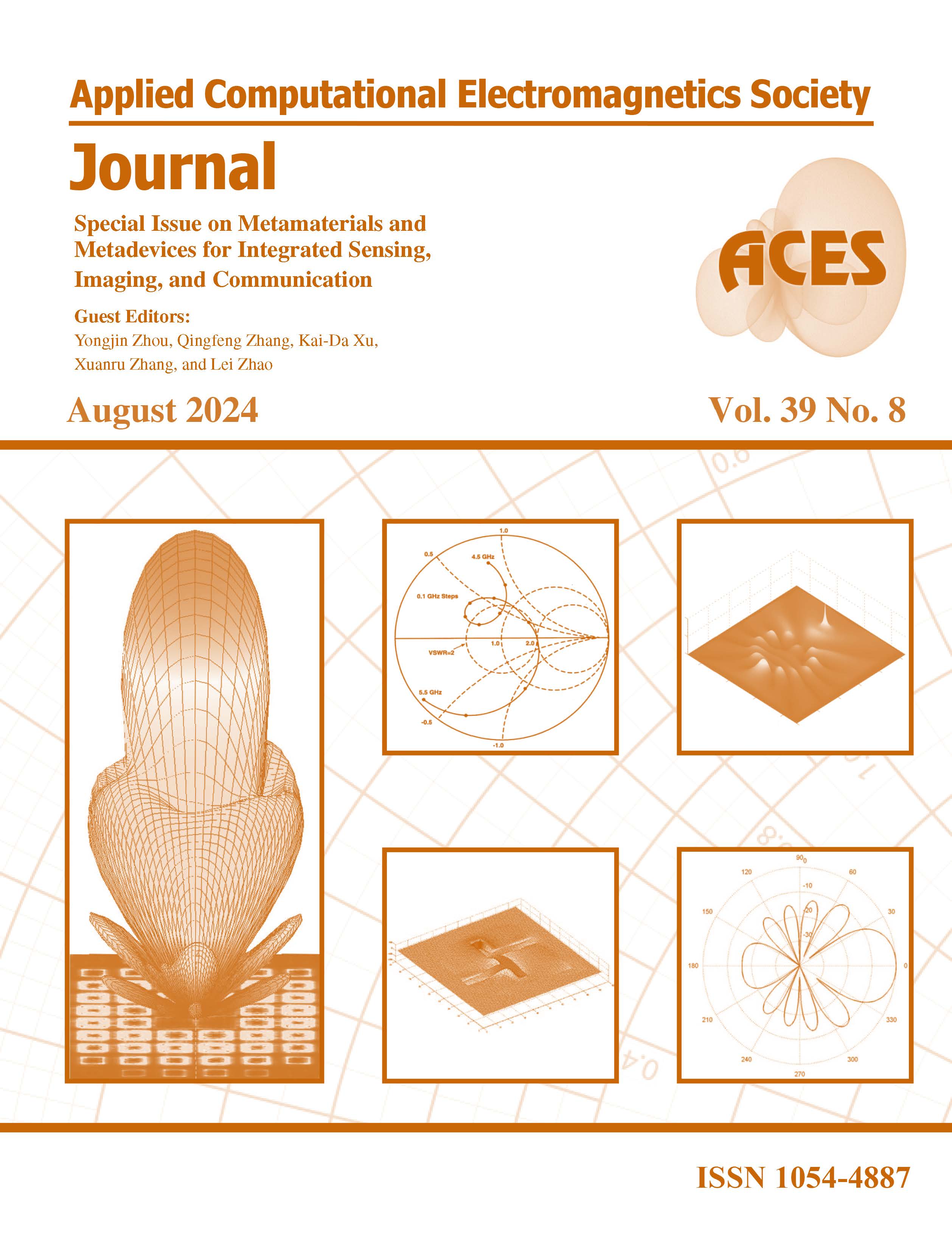Design of a High-frequency Antenna Along a Conducting Surface
DOI:
https://doi.org/10.13052/2024.ACES.J.390808Keywords:
Artificial magnetic conductor, broad band, HF antenna, impedance matching, low profileAbstract
Antennas in the high-frequency (HF) band (3-30 MHz) tend to be large and almost always protrude from the structure on which they are mounted. This paper will present a design in which the antenna is installed parallel to and close to a conducting surface. To achieve a small mismatch loss, a thin high-impedance metamaterial surface was designed. The bandwidth is enlarged by applying non-Foster impedances between the ends of the antenna arms and the conducting surface.
Downloads
References
D. Sievenpiper, L. Zhang, and E. Yablonovitch, “High-impedance electromagnetic ground planes,” in IEEE MTT-S Int. Microwave Symp. Dig., Anaheim, CA, vol. 4, pp. 1529-1532, June 1999.
D. Sievenpiper, Lijun Zhang, R. F. J. Broas, N. G. Alexopolous, and E. Yablonovitch, “High-impedance electromagnetic surfaces with a forbidden frequency band,” IEEE Trans. Microwave Theory Tech., vol. 47, no. 11, pp. 2059-2074, Nov. 1999.
D. Sievenpiper, R. Broas, and E. Yablonovitch, “Antennas on high-impedance ground planes,” in 1999 IEEE MTT-S Int. Microwave Symp. Dig., Anaheim, CA, vol. 3, pp. 1245-1248, June 1999.
R. F. J. Broas, D. F. Sievenpiper, and E. Yablonovitch, “A high-impedance ground plane applied to a cellphone handset geometry,” IEEE Trans. Microwave Theory Tech., vol. 49, no. 7, pp. 1262-1265, July 2001.
S. R. Best and D. L. Hanna, “Design of a broadband dipole in close proximity to an EBG ground plane,” IEEE Antennas and Propagation Magazine, vol. 50, no. 6, pp. 52-64, Dec. 2008.
S. Raza, M. A. Antoniades, and G. V. Eleftheriades, “A compact low-profile high-impedance surface for use as an antenna ground plane,” in IEEE Int. Symp. Antennas and Propagation (APSURSI), Spokane, WA, pp. 1832-1835, July 2011.
A. Bellion and M. Cable, “A new wideband and compact High Impedance Surface,” in 15 Int. Symp. Antenna Tech. and Applied Electromagnetics (ANTEM), Toulouse, France, pp. 1-5, June 2012.
H. Mirshahram and W. Qun, “Meander line-based high impedance surface with high angular stability of resonant frequency,” in 3rd IEEE Int. Symp. Microwave, Antenna, Propagation and EMC Technologies for Wireless Communications, Beijing, China, pp. 1246-1249, Oct. 2009.
H. J. Visser, “Printed folded dipole antenna design for rectenna and RFID applications,” in 7th European Conference on Antennas and Propagation (EuCAP), Gothenburg, Sweden, pp. 2852-2855, Apr. 2013.
S.E. Sussman-Fort and R.M. Rudish, “Non-Foster impedance matching of electrically-small antennas,” IEEE Trans. on Antennas Propagat., vol. 57, no. 8, pp. 2230-2241, Aug. 2009.
W. Lin and Z. Shen, “Broadband horizontally polarized HF antenna with extremely low profile above conducting ground,” in 2013 IEEE Antennas and Propagation Society International Symposium (APSURSI), Orlando, FL, pp. 688-689, July 2013.
Ansys Electronics Desktop, version 2024 R1, ANSYS, Canonsburg, PA, 2024.
J. Long and D. F. Sievenpiper, “Low-profile and low-dispersion artificial impedance surface in the UHF band based on non-Foster circuit loading,” in IEEE Trans. on Antennas Propagat., vol. 64, no. 7, pp. 3003-3010, July 2016.




